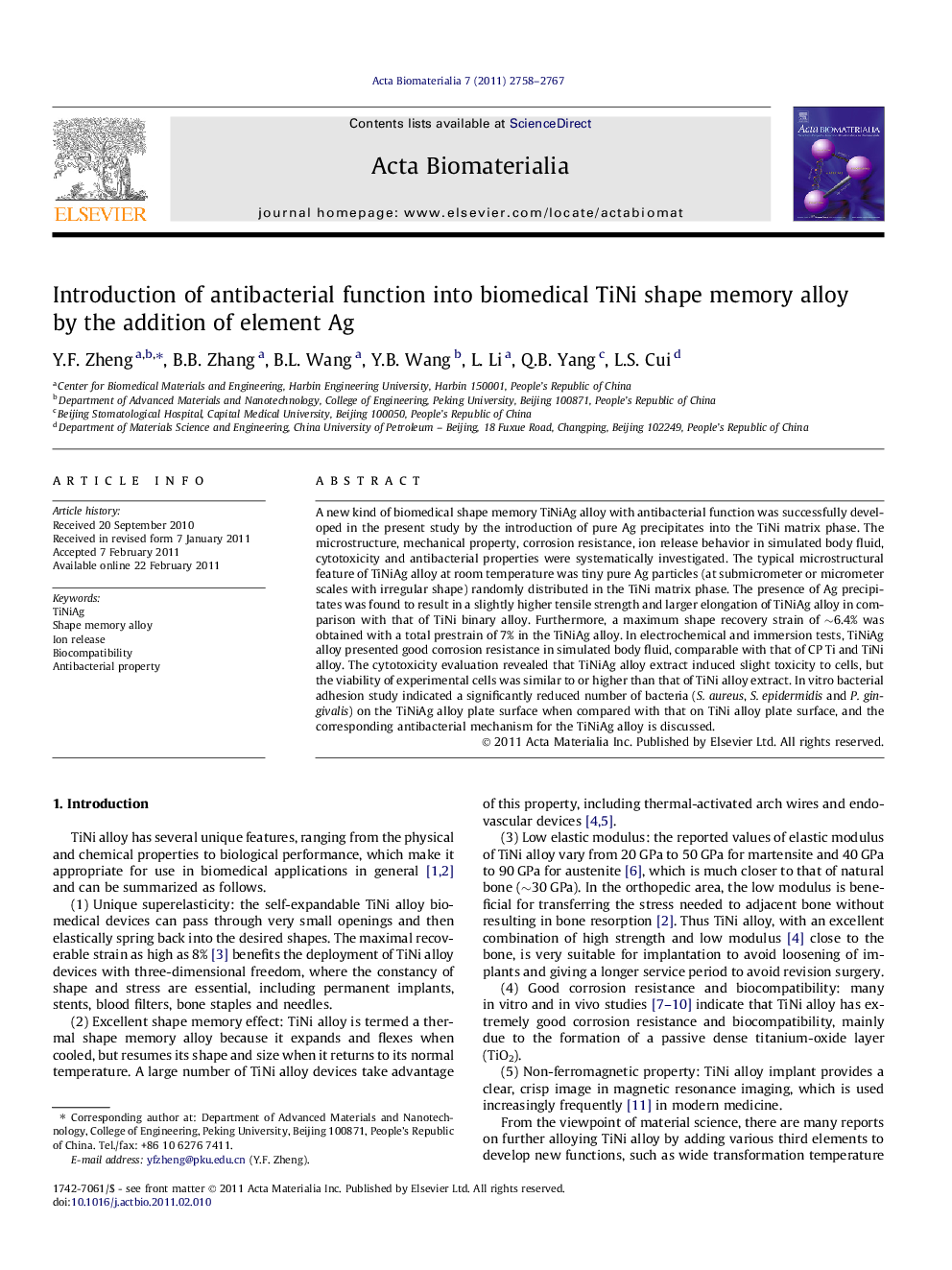| Article ID | Journal | Published Year | Pages | File Type |
|---|---|---|---|---|
| 1386 | Acta Biomaterialia | 2011 | 10 Pages |
A new kind of biomedical shape memory TiNiAg alloy with antibacterial function was successfully developed in the present study by the introduction of pure Ag precipitates into the TiNi matrix phase. The microstructure, mechanical property, corrosion resistance, ion release behavior in simulated body fluid, cytotoxicity and antibacterial properties were systematically investigated. The typical microstructural feature of TiNiAg alloy at room temperature was tiny pure Ag particles (at submicrometer or micrometer scales with irregular shape) randomly distributed in the TiNi matrix phase. The presence of Ag precipitates was found to result in a slightly higher tensile strength and larger elongation of TiNiAg alloy in comparison with that of TiNi binary alloy. Furthermore, a maximum shape recovery strain of ∼6.4% was obtained with a total prestrain of 7% in the TiNiAg alloy. In electrochemical and immersion tests, TiNiAg alloy presented good corrosion resistance in simulated body fluid, comparable with that of CP Ti and TiNi alloy. The cytotoxicity evaluation revealed that TiNiAg alloy extract induced slight toxicity to cells, but the viability of experimental cells was similar to or higher than that of TiNi alloy extract. In vitro bacterial adhesion study indicated a significantly reduced number of bacteria (S. aureus, S. epidermidis and P. gingivalis) on the TiNiAg alloy plate surface when compared with that on TiNi alloy plate surface, and the corresponding antibacterial mechanism for the TiNiAg alloy is discussed.
